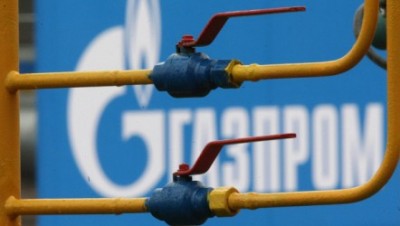Nord Stream 2: There’s No Stopping the World’s Most Politically Charged Pipeline

This week, Denmark granted Gazprom approval for its Nord Stream 2 gas pipeline project, a project that is set to bring 55 billion cubic meters of Russian gas into Europe annually. It is one of the most controversial pipeline projects in the world and is now moving ahead despite strong opposition from multiple EU members and the United States.
The geopolitical tensions surrounding the development of Nord Stream 2 are unprecedented. To begin with, Russia has very poor relations with the Baltic states and Poland, nations who will almost always fight against anything they see as empowering Russia geopolitically. Then there is Ukraine, a nation that is strongly against the pipeline due to its fear of losing the transit fees that it currently charges Russia for exporting gas to Europe. Finally, and perhaps most importantly, the United States sees this pipeline as a direct threat to its soft power in Europe as well as a threat to its growing LNG exports.
But for all the politics and attention that this pipeline is attracting, the simple truth of the matter is that Europe, and more specifically Germany, needs this natural gas. Germany plans to shut down all its nuclear reactors by 2022. Many have questioned the wisdom—and some even the sanity—of that decision, but it remains government policy. The generation capacity the is being lost in that sector will need to be replaced, in the short term at least, by natural gas.
Despite its green reputation, Germany is a country that generates a surprisingly large portion of its total energy from coal. Its total installed coal-fired capacity is close to its solar capacity, at 44.9 GW, versus 47.9 GW for solar. At today’s growth rates, it’s current solar and wind capacity will not be enough to replace the retired nuclear plants. The only other option, which would be boosting the share of coal in the country’s energy mix, is a political non-starter in Germany. Natural gas is, therefore, the only viable replacement and Germany is fully aware that its gas consumption is set to soar in the coming years.
Now, this gas doesn’t have to come from Russia, of course. It could come from the United States in LNG tankers. In fact, the European Union as a whole earlier this year promised President Trump to double its imports of U.S. LNG over the next five years. But they didn’t make the promise voluntarily. It came in response to a threat from Trump to slap import tariffs on European cars.
One may wonder why the EU, for all its anti-Russian rhetoric and sanctions, and legislative amendments aimed at curbing Gazprom’s role on the European gas market would need the incentive of a tariff threat to diversify away from Russian gas. The answer is, again, simple. It’s the price.
U.S. liquefied natural gas has to be, well, liquefied first, then loaded on a tanker and shipped across the ocean to Europe. Russian gas runs through pipelines as is. And, even if LNG were there answer, there is Novatek’s Yamal LNG plant that is exporting the liquefied fuel to Europe, which is much nearer Yamal than the Gulf Coast.
Abundant natural gas production and the subsequent low prices have made the U.S. a growing exporter and a force to be reckoned with. Yet producers still want to make profits rather than pump gas for political purposes. Ultimately it all comes down to one simple fact, Europeans pay more for U.S. LNG.
“Given our heavy dependence on imports, U.S. liquefied natural gas, if priced competitively, could play an increasing and strategic role in EU gas supply,” said the European Energy Commissioner, Miguel Arias Canete, earlier this year.
The operative phrase is “if priced competitively”, as supported by the statement of a Total official commenting on Trump’s tariff threat at the time.
“We need to create the demand in order to justify these logistics and this investment,” said Total’s president of gas operations, Laurent Vivier in May. “That will come to European policy and setting what role we want gas to play in Europe”.
Ultimately, for all the political posturing and threats of sanctions, the Trump administration and its allies on this matter have never been in a position to stop Nord Stream 2. While geopolitics are powerful, the fundamentals will almost always win out. If there is demand, supply will follow. The message to the U.S. from Europe when it comes to natural gas is loud and clear, “Make it competitive and we’ll take it”.
*
Note to readers: please click the share buttons above or below. Forward this article to your email lists. Crosspost on your blog site, internet forums. etc.
Irina Slav is a writer for Oilprice.com with over a decade of experience writing on the oil and gas industry.

